Learning how to care for alpacas is essential for anyone interested in keeping these serene and valuable animals as livestock. Alpacas, with their gentle nature and luxurious fiber, have become increasingly popular globally for their wool and as companions and participants in sustainable farming practices.
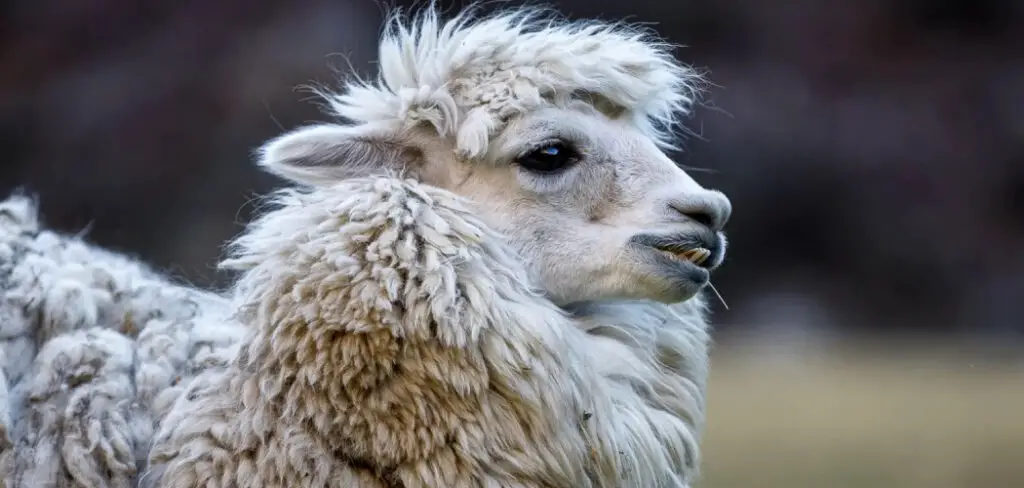
This guide will explore the critical aspects of caring for alpacas, emphasizing their unique characteristics, their benefits to a farm, and the vital considerations for their upkeep. Proper care and management practices are pivotal for healthy alpaca husbandry, and this introduces a comprehensive approach to meeting their needs.
From understanding their social behavior and dietary requirements to ensuring they have adequate shelter and healthcare, this guide will equip you with the knowledge needed to provide optimal care for your alpacas.
How to Care for Alpacas: Housing and Shelter
Providing adequate housing and shelter for alpacas is crucial to their well-being and protection from the elements. Originating from the Andean mountain range, alpacas are well-adapted to variations in temperature but still require shelter from extreme weather conditions such as intense sun, wind, rain, and cold.
A. Shelter Requirements
An ideal shelter for alpacas offers space for them to comfortably stand, lie down, and move about. It should protect them from harsh weather while ensuring proper ventilation and drainage to avoid damp conditions that can lead to health issues.
The structure doesn’t need to be elaborate; a three-sided shelter that opens away from prevailing winds can provide sufficient protection. Ensure the roof is high enough to facilitate air circulation and keep the internal environment dry and comfortable.
B. Pasture and Grazing Areas
Alpacas are grazing animals, and their diet primarily consists of grass. Maintaining fenced pastures that offer access to clean water and nutritious forage is essential. A well-designed pasture system allows for rotational grazing, which helps prevent overgrazing, maintains pasture health, and minimizes the risk of parasite infestation. Access to various grasses ensures a balanced diet and reduces the need for supplementary feeding.
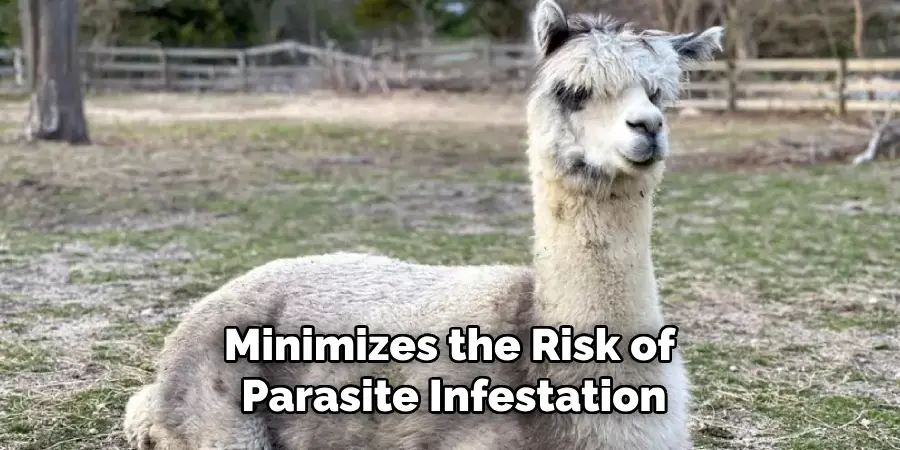
C. Bedding
While alpacas spend much of their time outdoors, comfortable and dry bedding material such as straw or wood shavings is important for insulation and comfort, especially in colder climates and at night.
The bedding should be changed regularly to keep the shelter hygienic and prevent the growth of mold and bacteria, which could compromise the health of the alpacas. Proper bedding supports the physical health of alpacas and contributes to their overall contentment and stress reduction.
How to Care for Alpacas: Nutrition and Feeding
Alpacas are primarily grazing animals, thriving on high-quality forage and pasture. Offering a diverse selection of grasses can satisfy their nutritional needs and simulate their natural grazing patterns.
During the growing season, ensure alpacas have ample access to fresh, green pasture. In winter or during dry periods when natural grasses are scarce, supplement their diet with high-quality hay. It’s critical to ensure that the forage, whether fresh or dried, is free from toxic plants and fungi that could harm the alpacas.
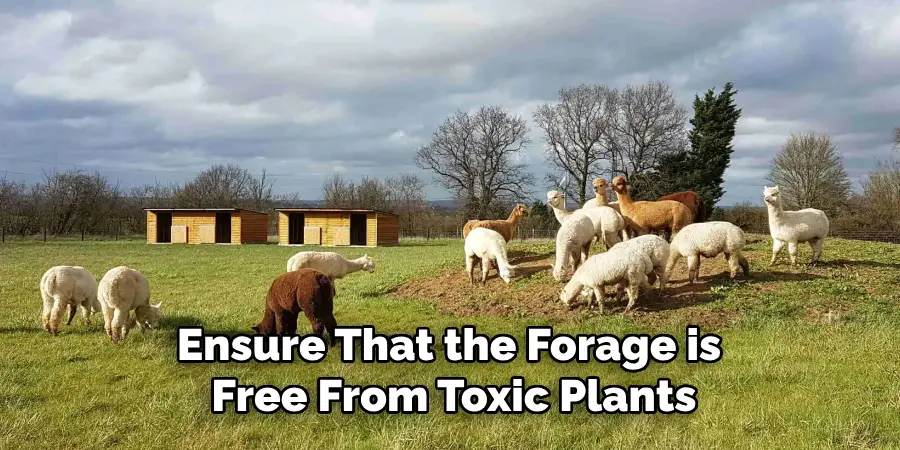
Despite a diet rich in forage, alpacas may still require additional minerals that grass and hay alone cannot sufficiently provide. Providing access to mineral supplements specifically formulated for alpacas is essential to balancing their diet and ensuring they receive all necessary nutrients.
These supplements can help prevent deficiencies in key minerals like selenium, copper, and zinc. Place mineral blocks or loose minerals in a dry, accessible area and monitor intake to ensure alpacas consume the correct amounts.
Monitoring the body condition of alpacas is crucial to avoid overfeeding, which can lead to obesity and associated health issues such as metabolic disorders. Alpacas have a tendency to put on weight easily, especially if their diet is too high in carbohydrates or if they have limited space to roam and exercise.
Implement a feeding strategy that considers each animal’s body condition score (BCS), adjusting their diet to maintain an optimal BCS. Overfeeding can be as detrimental to an alpaca’s health as underfeeding, making it important to balance their nutritional intake.
Learning how to care for alpacas includes understanding their nutritional needs and how to meet them. A diet centered on high-quality pasture and forage, supplemented with the necessary minerals and monitored to prevent overfeeding, plays a foundational role in maintaining the health and well-being of these animals.
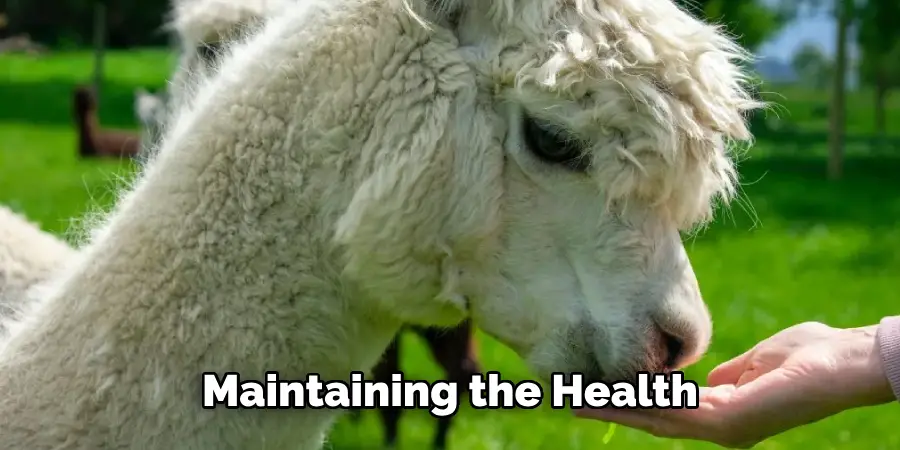
How to Care for Alpacas: Health and Veterinary Care
Ensuring the health and well-being of alpacas requires diligent attention to routine veterinary care and disease prevention. A solid health management program is paramount in keeping these animals thriving.
A. Routine Health Checks
Regular health checks are vital for the early detection of potential health issues and for preventing diseases. These checks should include monitoring for external and internal parasites, dental examinations to prevent malocclusion and other dental problems, and vaccinations as a veterinarian recommends.
Routine health evaluations ensure the alpacas are in good health and help maintain the overall herd health by preventing the spread of infectious diseases. It’s advisable to schedule health checks at least twice a year, although more frequent assessments may be necessary depending on the health status and age of the alpacas.
B. Parasite Control
Effective parasite management is critical in alpaca care. Implementing strategies such as rotational grazing can significantly reduce the parasite load on the pasture and the need for chemical dewormers. Regular fecal tests should be conducted to monitor the parasite burden and guide deworming protocols.
This approach allows for targeted treatment, reducing the risk of developing dewormer resistance. Keeping pastures clean and avoiding overstocking are also essential measures in controlling parasite populations.
C. Emergency Preparedness
Having a plan in place for medical emergencies is crucial. This includes knowing the contact information for your veterinarian and the nearest veterinary hospital that treats alpacas. Keep a well-stocked first-aid kit readily available for treating minor injuries and stabilizing an alpaca until professional veterinary care can be obtained.
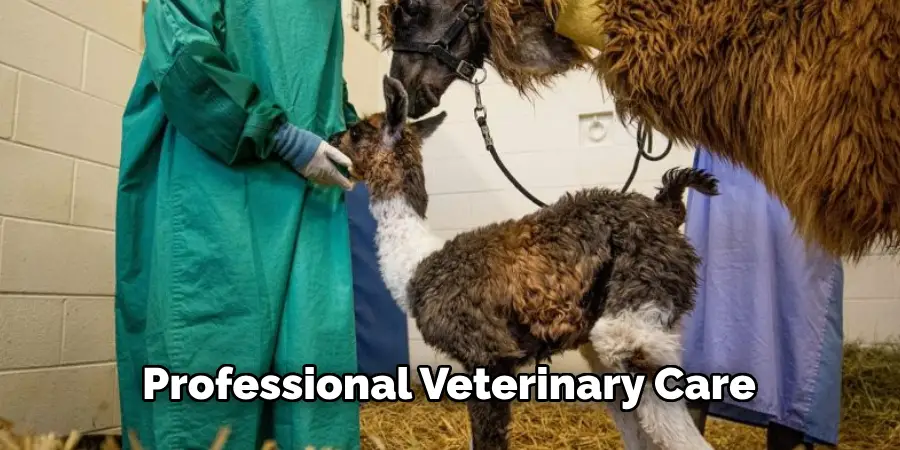
Training on recognizing signs of distress or illness in alpacas can greatly improve the outcomes of emergency situations. Familiarize yourself with common alpaca health issues and their symptoms to ensure swift action can be taken when necessary.
In conclusion, incorporating routine health checks, effective parasite control, and emergency preparedness into your alpaca care regimen is essential for maintaining the health and well-being of your herd. By establishing a close working relationship with a veterinarian experienced in camelid care, you can ensure your alpacas receive the best possible care throughout their lives.
Shearing and Fiber Management
Proper shearing and fiber management are crucial aspects of alpaca care that contribute to the animal’s health and the quality of the fiber it produces.
A. Shearing Schedule
Alpacas should be sheared annually, typically in the spring before the onset of hot weather, to remove excess fiber and maintain their overall health and comfort. Annual shearing helps prevent heat stress during the warmer months, reduces the risk of skin diseases by improving air circulation, and facilitates better hygiene. It’s important to hire a professional shearer who has experience with alpacas to minimize stress and the risk of injury to the animal.
B. Fiber Sorting and Processing
After shearing, the alpaca fiber should be sorted and graded according to quality. The finest fibers, usually found on the blanket area of the alpaca, are highly prized for their softness and are often used for premium garments. Coarser fibers from the legs and neck can still be used for a variety of products, such as rugs and insulation materials.
Once sorted, the fiber can be prepared for sale directly or processed into yarn or other products. Cleaning the fiber to remove dirt and grease increases its value and usability for further processing.

C. Skin and Coat Care
Keeping an alpaca’s skin and coat clean and dry is essential to prevent matting, skin conditions, and heat stress, especially after shearing. Regular dust baths in fine, dry dirt can help alpacas keep their skin healthy and parasite-free. In wet or humid climates, it’s important to provide a dry shelter area to prevent the alpaca’s coat from staying damp, which can lead to skin infections.
Additionally, monitoring for signs of skin irritation or infection after shearing and treating any issues promptly will help maintain the health and quality of the alpaca fiber.
By adhering to a strict shearing schedule, meticulously sorting and processing the fiber, and maintaining the cleanliness and health of the skin and coat, alpaca owners can ensure the well-being of their animals while maximizing the economic return from their fiber.
Handling and Socialization
Proper handling and socialization are essential to the overall well-being of alpacas, facilitating the day-to-day management of these animals and ensuring their psychological health.
A. Gentle Handling
Alpacas are sensitive creatures that respond best to calm and gentle handling. Building trust with these animals minimizes stress and fosters a positive relationship between alpacas and their caretakers.
This approach is particularly important during potentially stressful situations such as shearing, veterinary procedures, and transport. Establishing a routine that alpacas can become familiar with, using a soft voice, and avoiding sudden movements are key strategies in gentle handling.
B. Social Interaction
Alpacas are inherently social animals, thriving on interaction within a herd environment. Providing opportunities for them to socialize with each other supports natural herd dynamics and promotes a well-adjusted herd. It is also beneficial to allow alpacas to have positive interactions with humans.
This can be facilitated through regular, gentle handling from a young age, which helps them become accustomed to human contact and reduces fearfulness. Socialization with humans can be especially important for animals used in therapy settings or those frequently handled, such as breeding males or show animals.

C. Training and Halter Skills
Training alpacas in basic halter skills is an important aspect of their care, facilitating easier handling for veterinary checks, shearing, and moving the animals as needed. Training should be approached with patience and positive reinforcement techniques, rewarding desired behaviors to encourage repetition.
Gradual desensitization to the halter and lead, starting with short, positive sessions, can help build confidence and cooperation in the alpaca. Consistency in training and handling, combined with an understanding and respect for the animal’s natural behaviors, ensures that alpacas can be led and handled with ease, contributing to their safety and the safety of their handlers.
Breeding and Reproduction
Breeding and reproduction are central to the sustainable management and welfare of alpacas, requiring careful planning and attentive care throughout the process to ensure the health and vitality of both the mothers and their offspring.
A. Breeding Management
Breeding management begins with a well-thought-out breeding program that carefully considers the breeding stock’s genetics, health, and temperament. The goal is to enhance the herd’s genetic quality while maintaining genetic diversity.
Selecting alpacas for breeding should involve evaluating their fiber quality, conformation, and health history to ensure that only the best traits are passed on to future generations. Additionally, considering the alpaca’s temperament is essential for promoting gentle and manageable behaviors in their offspring.
B. Pregnancy Care
Providing proper care during pregnancy is critical for the health of the pregnant alpaca and the development of the cria. This includes offering nutritionally balanced diets that meet the increased dietary requirements during pregnancy and ensuring that pregnant alpacas are monitored for signs of complications.

Regular veterinary check-ups allow for the early identification and management of any potential health issues. Creating a stress-free environment is also crucial for supporting the health and well-being of the pregnant alpaca.
C. Birthing Assistance
While alpacas generally give birth without complications, caretakers should be prepared to provide assistance if necessary. A clean, safe, and quiet birthing area is critical to minimize risks to the mother and cria.
Knowing the signs of labor and how to assist in the birthing process while being ready to seek veterinary help if complications arise can significantly affect outcomes. Post-birth, ensure that the mother and cria are healthy and bonding well, with the cria nursing successfully to kickstart its growth and immunity.
Environmental Considerations
Caring for alpacas requires mindfulness about their environment to ensure their well-being and productivity. Key environmental considerations include climate adaptation, water and heat management, and disease prevention.
A. Climate Adaptation
Alpacas are hardy animals, capable of adapting to a variety of climatic conditions, from the cool high altitudes of their native Andes to warmer, more temperate climates. Nevertheless, providing adequate shelter and protection during extreme weather conditions is essential. Whether it’s heavy rain, intense heat, or cold snaps, shelters should be designed to offer refuge from the elements, ensuring that alpacas remain comfortable and stress-free.
B. Water and Heat Management
Access to clean and fresh water is critical for alpacas, especially during hot weather, to prevent dehydration. Water containers should be checked and refilled regularly to maintain cleanliness and to ensure availability. During periods of extreme heat, additional measures such as shade provision and adequate ventilation in housing can prevent heat stress, keeping alpacas cool and comfortable.
C. Disease Prevention
Good hygiene and biosecurity measures are vital in minimizing the risk of disease spread among alpacas. Regular cleaning of living spaces, proper disposal of waste, and isolation of sick animals can greatly reduce the potential for outbreaks. Implementing quarantine procedures for new or returning animals can also help prevent the introduction of contagions into the herd, safeguarding the health of the alpaca population.
Conclusion
In summary, understanding how to care for alpacas involves a comprehensive approach encompassing their physical, social, and environmental needs. Essential practices for optimal alpaca care include proper nutrition, adequate social interaction, consistent training, attentive breeding and reproduction management, and vigilant healthcare.
Additionally, tailoring the environment to suit alpaca needs—such as providing shelter against extreme weather, ensuring access to clean water, and implementing effective disease-prevention strategies—is crucial for their well-being.
The importance of providing an optimal care regimen cannot be overstated. It ensures the health and productivity of the alpacas and enriches the bond between the animals and their caretakers.
You can foster a thriving alpaca herd by adhering to these practices and considerations.
We wish you success in your journey of alpaca care and management! Your dedication to understanding and implementing the best practices for alpaca husbandry will undoubtedly reap rewards in the health and happiness of your alpacas.
About
Outdoor Fixes is a distinguished figure in the world of Diy design, with a decade of expertise creating innovative and sustainable Diy solutions.
His professional focus lies in merging traditional craftsmanship with modern manufacturing techniques,
fostering designs that are both practical and environmentally conscious. As the author of diy,
outdoorfixes delves into the art and science of outdoorfixes-making, inspiring artisans and industry professionals alike.
Education RMIT University
(Melbourne, Australia) Associate Degree in Design (Outdoor Fixes) Focus on sustainable design, industry-driven projects,
and practical craftsmanship. Gained hands-on experience with traditional and digital manufacturing tools, such as CAD and CNC software.
Nottingham Trent University
(United Kingdom) Bachelor’s in outdoorfixes.com and Product Design (Honors) Specialized in product design with a focus on blending creativity with production
techniques. Participated in industry projects, working with companies like John Lewis and Vitsoe to gain real-world insights.
Publications and Impact
In diy, Outdoor Fixes his insights on indoor design processes, materials, and strategies for efficient production.
His writing bridges the gap between artisan knowledge and modern industry needs, making it a must-read for both budding designers and seasoned professionals.

